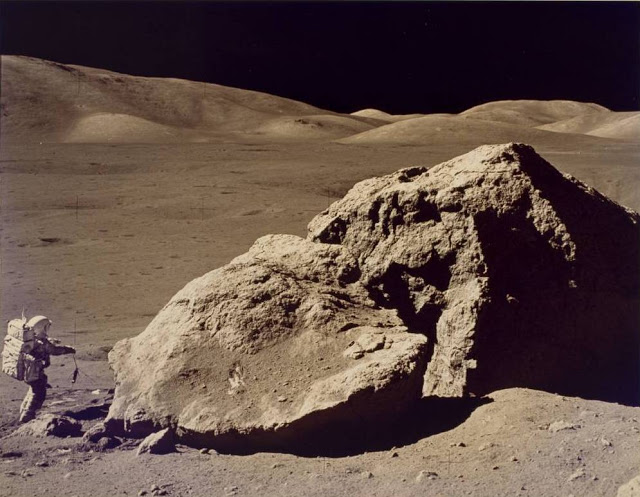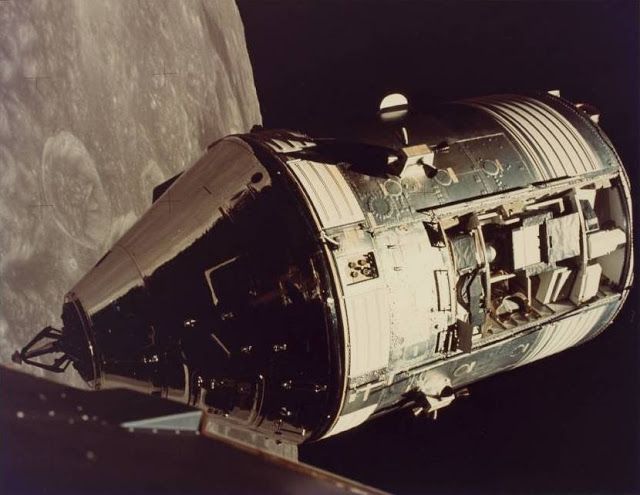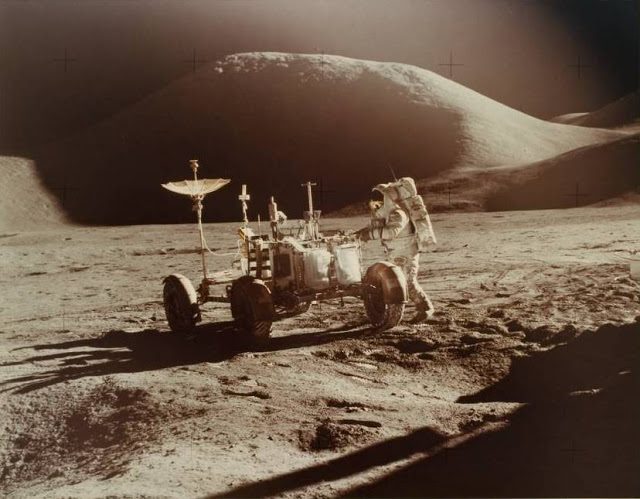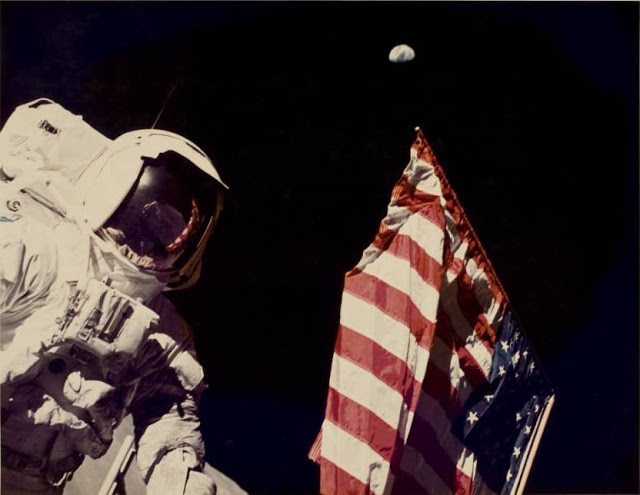The Apollo program, also known as Project Apollo, was the third United States human spaceflight program carried out by the National Aeronautics and Space Administration (NASA), which had accomplished landing the first humans on the Moon from 1969 to 1972. First conceived during Dwight D. Eisenhower’s administration as a three-man spacecraft to follow the one-man Project Mercury which put the first Americans in space, Apollo was later dedicated to President John F. Kennedy’s national goal of “landing a man on the Moon and returning him safely to the Earth” by the end of the 1960’s, which he proposed in a May 25th, 1961, address to Congress. Project Mercury was followed by the two-man Project Gemini (1962–66). The first manned flight of Apollo was in 1968.
A magnificent desolation
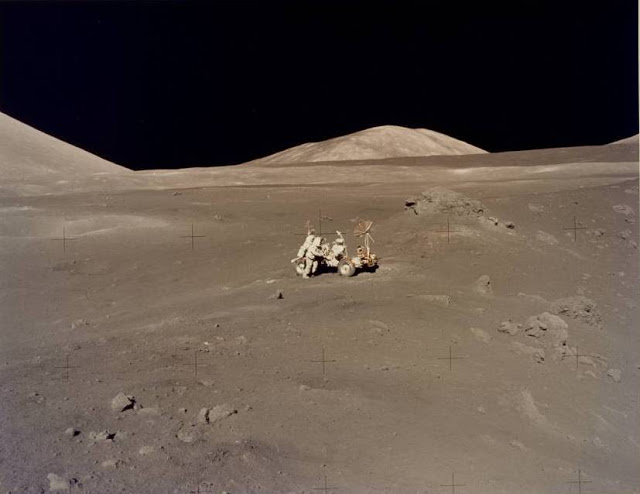
Apollo 17 astronaut Evans retrieves film canister during space walk
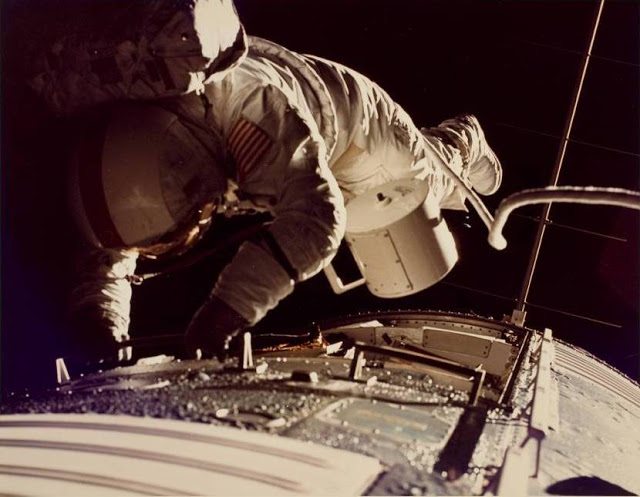
Kennedy’s goal was accomplished on the Apollo 11 mission when astronauts Neil Armstrong and Buzz Aldrin landed their Lunar Module (LM) on July 20, 1969, and walked on the lunar surface, while Michael Collins remained in lunar orbit in the Command/Service Module (CSM), and all three landed safely on Earth on July 24th. Five subsequent Apollo missions also landed astronauts on the Moon, the last in December 1972. In these six spaceflights, twelve men walked on the Moon.
Apollo ran from 1961 to 1972 and was supported by the two-man Gemini program which ran concurrently with it from 1962 to 1966. Gemini missions developed some of the space travel techniques that were necessary for the success of the Apollo missions. Apollo used Saturn family rockets as launch vehicles. Apollo/Saturn vehicles were also used for an Apollo Applications Program, which consisted of Skylab, a space station that supported three manned missions in 1973–74, and the Apollo–Soyuz Test Project, a joint Earth orbit mission with the Soviet Union in 1975.
Apollo 17 astronaut Harrison Schmitt collects lunar rock samples
The Apollo program succeeded in achieving its goal of manned lunar landing, despite the major setback of a 1967 Apollo 1 cabin fire that killed the entire crew during a prelaunch test. After the first landing, sufficient flight hardware remained for nine follow-on landings with a plan for extended lunar geological and astrophysical explorationApollo 17 command
Apollo 17 onboard photo of area near the Valley of Tourus-Littrow on the lunar surface
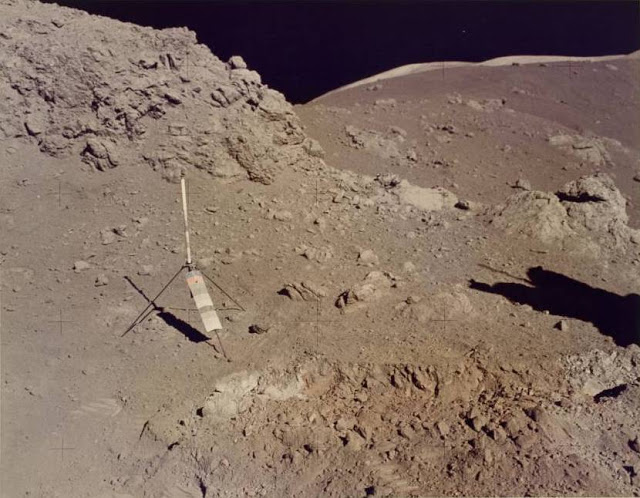
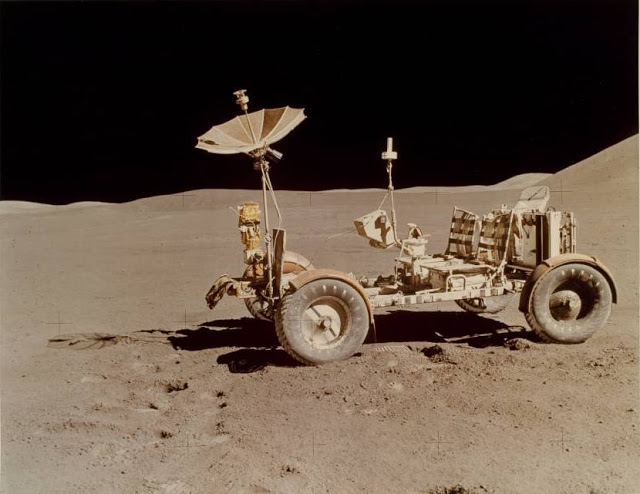
Astronaut James Irwin gives salute beside U.S. flag during lunar surface extravehicular activity (EVA)
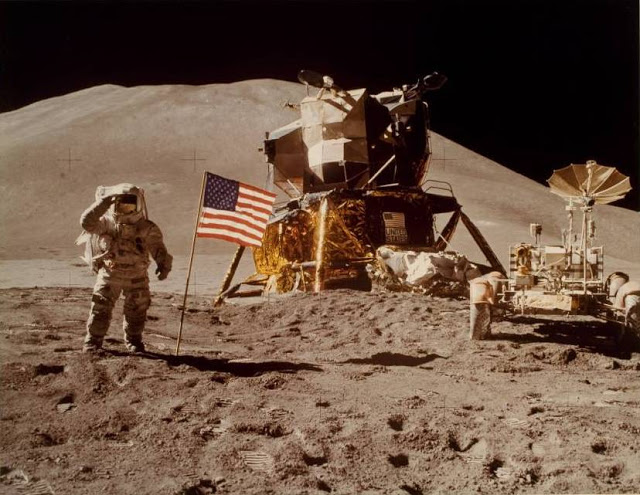
Cernan driving the rover,
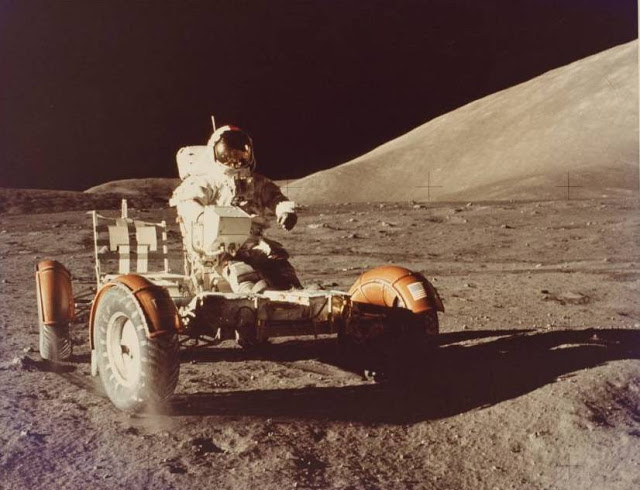
Lunar activities during the Apollo 15 mission,
Lunar roving vehicle during the Apollo 15th mission,
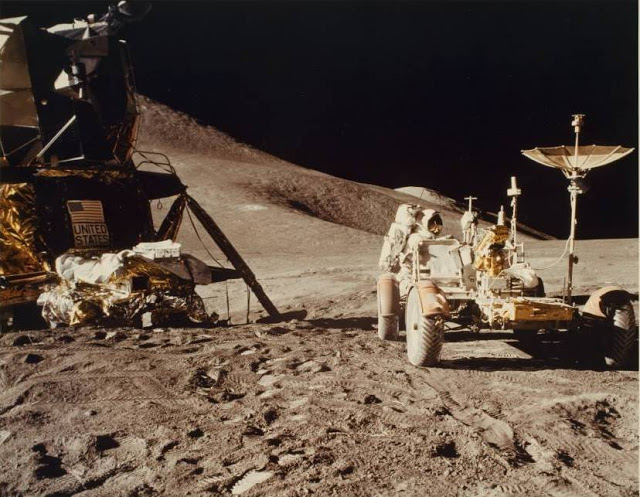
Schmitt with flag and earth above,
Scott gives salute
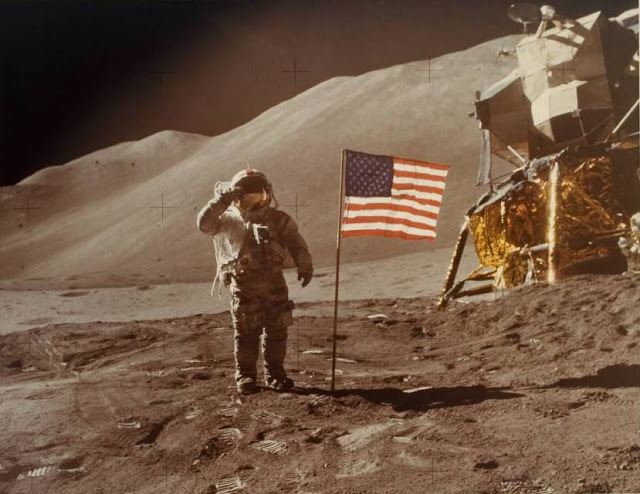
Apollo set several major human spaceflight milestones. It stands alone in sending manned missions beyond low Earth orbit. Apollo 8 was the first manned spacecraft to orbit another celestial body while the final Apollo 17 mission marked the sixth Moon landing and the ninth manned mission beyond low Earth orbit. The program returned 842 pounds (382 kg) of lunar rocks and soil to Earth, greatly contributing to the understanding of the Moon’s composition and geological history.
All photos by Nasa
